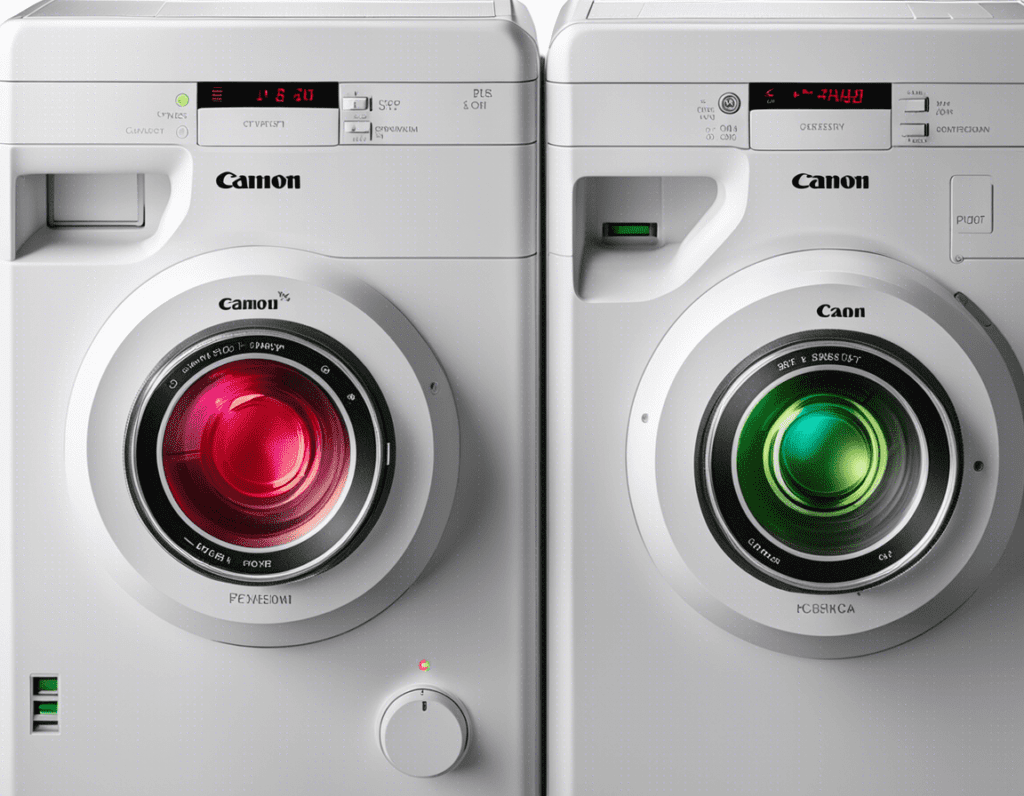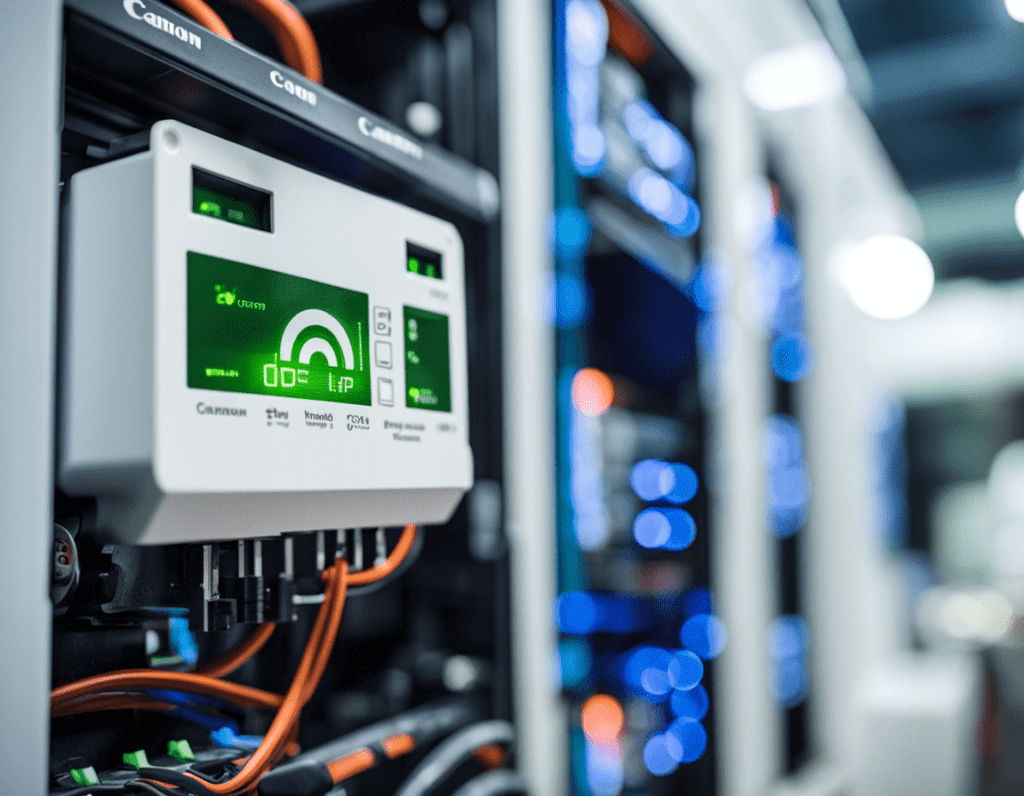In today’s digital age, efficient networking is not just a luxury – it’s a necessity. The demand for faster and greener networks is rapidly increasing, and businesses need to stay ahead of the game. That’s where Energy Efficient Ethernet (EEE) comes into play. EEE is a revolutionary technology that not only enhances network speed and performance but also significantly reduces energy consumption.
With the advent of cloud computing, big data, and IoT devices, traditional networking technologies are struggling to keep up. EEE offers a solution by intelligently managing network activity and ensuring that energy is used only when necessary. By dynamically adjusting power usage based on network load, EEE can reduce energy consumption by up to 50%. This not only lowers operational costs but also contributes to a more sustainable and environmentally-friendly approach to networking.
In this article, we will delve into the advantages of Energy Efficient Ethernet and explore how it can benefit businesses of all sizes. From improved network performance to reduced carbon footprint, EEE is changing the game of networking for the better. So, join us as we take a closer look at the future of networking – where speed, efficiency, and sustainability go hand in hand.
Check out what you will see in this post

The Need for Energy Efficiency in Networking
In today’s data-driven world, businesses rely heavily on network infrastructure to connect their devices and systems. However, traditional networking technologies consume a significant amount of energy, leading to high operational costs and increased carbon emissions. This is where energy efficiency becomes crucial.
Energy Efficient Ethernet (EEE) addresses this need by optimizing power usage and reducing energy consumption without compromising network performance. By intelligently managing network activity and dynamically adjusting power usage based on demand, EEE ensures that energy is only used when necessary. This not only lowers operational costs but also contributes to a more sustainable and environmentally-friendly approach to networking.
How Energy Efficient Ethernet Works
Energy Efficient Ethernet (EEE) works by intelligently managing network activity and power usage to optimize energy consumption. It achieves this through three primary mechanisms: Low Power Idle (LPI), Wake-on-LAN (WoL), and Link Aggregation Control Protocol (LACP).
### Low Power Idle (LPI)
LPI is a feature of EEE that allows network devices to enter a low-power state when there is no network traffic. Instead of constantly consuming power at full capacity, devices can reduce their power usage during idle periods. This significantly reduces energy consumption without affecting network performance.
### Wake-on-LAN (WoL)
WoL is another feature of EEE that allows network devices to be woken up from sleep mode remotely. Instead of keeping devices powered on at all times, WoL enables them to enter a low-power state and be awakened when network activity is detected. This further reduces energy consumption by ensuring that devices are only active when needed.
### Link Aggregation Control Protocol (LACP)
LACP is a mechanism that allows multiple physical network links to be combined into a single logical link. By aggregating the bandwidth of multiple links, LACP enhances network performance and efficiency. This reduces the need for additional network equipment, resulting in lower energy consumption and cost savings.

Advantages of Energy Efficient Ethernet
Energy Efficient Ethernet (EEE) offers numerous advantages for businesses seeking faster and greener networking solutions. Let’s explore some of the key benefits:
### 1. Reduced Energy Consumption and Cost Savings
One of the most significant advantages of EEE is its ability to reduce energy consumption by up to 50%. By dynamically adjusting power usage based on network load and intelligently managing network activity, EEE ensures that energy is used efficiently. This leads to substantial cost savings on energy bills, especially for businesses with large network infrastructures.
### 2. Improved Network Performance and Reliability
EEE enhances network performance by optimizing power usage and reducing network latency. By dynamically adjusting power consumption, EEE ensures that network devices are always running at optimal performance levels. This leads to faster data transfer speeds, lower latency, and improved overall network reliability.
### 3. Environmental Sustainability
In addition to cost savings and improved performance, EEE also contributes to environmental sustainability. By reducing energy consumption and carbon emissions, businesses can minimize their impact on the environment. This aligns with the growing global focus on sustainability and can enhance a company’s reputation as an environmentally responsible organization.
### 4. Future-Proof Networking
EEE is designed to be compatible with existing Ethernet infrastructure, making it a future-proof networking solution. As technology continues to evolve, EEE can seamlessly integrate with new devices and systems, ensuring continued performance and energy efficiency. This eliminates the need for costly network upgrades and allows businesses to adapt to changing technological requirements easily.

Case Studies and Success Stories of Implementing EEE
Real-world examples and case studies can provide valuable insights into the benefits and effectiveness of Energy Efficient Ethernet (EEE). Let’s take a look at some success stories:
### 1. Company A: Reducing Energy Consumption and Costs
Company A, a large multinational corporation, implemented EEE across its network infrastructure. By optimizing power usage and reducing energy consumption, the company was able to achieve substantial cost savings on its energy bills. Additionally, the improved network performance resulted in increased productivity and enhanced user experience.
### 2. Company B: Embracing Environmental Sustainability
Company B, a mid-sized technology company, implemented EEE as part of its sustainability initiatives. By reducing its carbon footprint through energy-efficient networking, the company demonstrated its commitment to environmental responsibility. This not only enhanced its reputation but also attracted environmentally-conscious clients and partners.
### 3. Company C: Future-Proofing Network Infrastructure
Company C, a rapidly growing startup, implemented EEE to future-proof its network infrastructure. By adopting a technology that seamlessly integrates with new devices and systems, the company ensured that its network would remain efficient and reliable as it scaled. This saved the company from costly network upgrades and allowed it to focus on its core business.
Tips for Implementing Energy Efficient Ethernet in Your Network
Implementing Energy Efficient Ethernet (EEE) in your network infrastructure can bring numerous benefits. Here are some tips to help you get started:
### 1. Assess Your Network Requirements
Before implementing EEE, assess your network requirements and identify areas where energy efficiency can make a significant impact. Determine the number of devices, network traffic patterns, and power consumption to understand the potential benefits of EEE in your specific environment.
### 2. Choose Compatible Network Devices
Ensure that the network devices you choose are compatible with EEE. Look for devices that support the IEEE 802.3az standard, which is the industry standard for Energy Efficient Ethernet. This ensures seamless integration and optimal performance.
### 3. Enable EEE on Network Switches and Network Interface Cards (NICs)
Enable EEE on your network switches and network interface cards (NICs) to take advantage of its benefits. Consult the manufacturer’s documentation or seek professional assistance to properly configure and enable EEE on your network devices.
### 4. Monitor and Optimize Power Usage
Regularly monitor and optimize power usage within your network infrastructure. Use network monitoring tools to identify areas of high power consumption and make necessary adjustments. This ensures that your network is operating at its most energy-efficient state.
### 5. Educate and Train Your IT Team
Educate and train your IT team on the benefits and implementation of EEE. Ensure that they understand the importance of energy efficiency and are equipped with the knowledge to optimize your network infrastructure accordingly.

Challenges and Limitations of EEE
While Energy Efficient Ethernet (EEE) offers significant advantages, it’s essential to be aware of its challenges and limitations:
### 1. Compatibility Issues
Not all network devices and systems are compatible with EEE. Before implementing EEE, ensure that your existing network infrastructure and devices support the IEEE 802.3az standard. Incompatibility can hinder the effectiveness of EEE and limit its benefits.
### 2. Potential Performance Trade-Offs
Enabling EEE may result in slight performance trade-offs in certain situations. While EEE optimizes power usage and enhances energy efficiency, there can be a slight increase in network latency during periods of network traffic. However, these trade-offs are generally minimal and outweighed by the overall benefits of EEE.
### 3. Limited Control over End Devices
EEE relies on the cooperation of end devices to achieve optimal energy efficiency. If certain devices on your network do not support EEE or are not properly configured, they may consume more power than necessary, impacting the overall energy savings achieved by EEE.

Comparison of EEE with Traditional Ethernet
Energy Efficient Ethernet (EEE) offers several advantages over traditional Ethernet technologies. Let’s compare the two:
### 1. Energy Consumption
Traditional Ethernet technologies consume a significant amount of energy, even during idle periods. In contrast, EEE optimizes power usage and reduces energy consumption by dynamically adjusting power based on network load. This leads to substantial energy savings and reduced operational costs.
### 2. Network Performance
EEE enhances network performance by reducing network latency and ensuring devices operate at optimal performance levels. Traditional Ethernet technologies may experience performance bottlenecks and increased latency, especially during periods of high network activity.
### 3. Compatibility and Future-Proofing
EEE is designed to be compatible with existing Ethernet infrastructure, making it a future-proof networking solution. Traditional Ethernet technologies may require costly upgrades or replacements as technology evolves, leading to additional expenses and operational disruptions.

Future Developments and Trends in Energy-Efficient Networking
As technology continues to evolve, energy-efficient networking is expected to undergo further developments and trends. Here are some future possibilities:
### 1. Increased Integration with IoT Devices
As the Internet of Things (IoT) continues to grow, energy-efficient networking solutions will be even more critical. Integration between EEE and IoT devices is expected to increase, enabling more efficient and sustainable connectivity across various industries.
### 2. Enhanced Power Management Algorithms
Future developments in power management algorithms will further optimize energy usage in networking devices. These algorithms will dynamically adjust power consumption based on more advanced and accurate metrics, leading to even greater energy savings.
### 3. Standardization and Adoption
Energy-efficient networking solutions like EEE are expected to become more standardized and widely adopted. As businesses prioritize energy efficiency and sustainability, the demand for such technologies will increase, leading to broader adoption and integration across industries.

Conclusion: Embracing the Future of Networking with Energy Efficient Ethernet
Energy Efficient Ethernet (EEE) is revolutionizing the way businesses approach networking. With its ability to optimize power usage, reduce energy consumption, and enhance network performance, EEE offers numerous advantages for businesses of all sizes. From cost savings to environmental sustainability, EEE aligns with the growing global focus on energy efficiency and a greener future. By implementing EEE in your network infrastructure and staying ahead of the game, you can embrace the future of networking – where speed, efficiency, and sustainability go hand in hand.
FAQ on Energy-Efficient Ethernet
What is the Energy-Efficient Ethernet option? Energy-Efficient Ethernet (EEE) is a set of enhancements to the Ethernet networking standard that aims to reduce power consumption during periods of low data activity. It works by allowing physical layer devices to enter a low power idle state when the network traffic is low or idle, significantly reducing power usage without affecting the network’s performance.
Should I turn off Energy-Efficient Ethernet? Turning off Energy-Efficient Ethernet may be considered if you are experiencing compatibility issues with older network devices or if you notice intermittent connectivity problems that can be directly attributed to EEE. However, for most users and scenarios, it’s beneficial to keep EEE enabled to save on energy costs and reduce environmental impact.
Does Energy-Efficient Ethernet affect performance? Energy-Efficient Ethernet is designed to be transparent to network performance. It reduces power consumption during periods of low activity without impacting the speed or reliability of the network connection during active use. In most cases, users will not notice any difference in network performance with EEE enabled.
How much power does Energy-Efficient Ethernet save? The amount of power saved by using Energy-Efficient Ethernet can vary depending on the network’s configuration, the type of devices used, and the pattern of network traffic. However, studies have shown that EEE can reduce power usage by up to 50% during periods of low activity for Ethernet devices. The actual savings in a home or office environment will depend on the number of EEE-enabled devices and their usage patterns, but overall, EEE contributes to significant energy savings in networks that support it.
